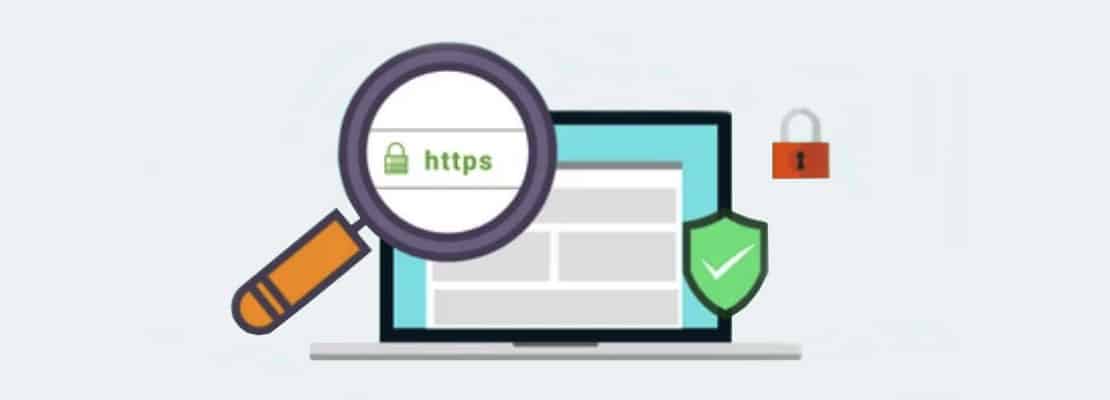Website security refers to the measures and practices implemented to protect websites from unauthorized access, data breaches, attacks, and other cyber threats.
The goal of website security is to ensure the confidentiality, integrity, and availability of website data and services.
Website security on a hosting provider involves various measures and services offered by the hosting provider to ensure the protection of websites hosted on their servers.
Checking the website security involves evaluating various aspects of its setup and configuration to ensure it is protected against common threats and vulnerabilities.
Steps and tools to Assess Website Security
1. Check for HTTPS
- Look for the Padlock Icon: Ensure the URL begins with “https://” and displays a padlock icon in the address bar.
- SSL Certificate Details: Click on the padlock icon to view the SSL/TLS certificate details, ensuring it is valid and issued by a trusted Certificate Authority (CA).
2. Use Website Security Scanners and Tools
- Online Scanners:
- Qualys SSL Labs: Provides a detailed analysis of the SSL/TLS configuration and overall security of a website.
- Sucuri SiteCheck: Scans the website for malware, blacklisting status, and security vulnerabilities.
- Mozilla Observatory: Analyzes the security headers and best practices implemented on the website.
- UpGuard Web Scan: Checks for HTTPS implementation, security headers, and other security features.
- Security Plugins:
- For CMS platforms like WordPress, use security plugins such as Wordfence, Sucuri Security, or iThemes Security to perform comprehensive security checks.
3. Verify Security Headers
- HTTP Security Headers: Use tools like SecurityHeaders.io to check if the website implements key security headers such as:
- Content Security Policy (CSP)
- X-Content-Type-Options
- X-Frame-Options
- Strict-Transport-Security (HSTS)

4. Check for Software Updates
- CMS and Plugins: Ensure that the content management system (e.g., WordPress, Joomla) and all installed plugins and themes are up to date.
- Server Software: Verify that the server software (e.g., Apache, Nginx, PHP) is also current and regularly updated.
5. Perform Vulnerability Scanning
- Automated Tools: Use vulnerability scanners like Nessus, OpenVAS, or Nikto to detect common vulnerabilities such as SQL injection, cross-site scripting (XSS), and outdated software.
- Manual Testing: Perform manual testing or hire a professional security auditor to conduct a thorough assessment.
6. Review Access Controls and Authentication
- User Accounts: Ensure strong password policies and two-factor authentication (2FA) are enforced for all user accounts.
- Access Control: Review role-based access controls to ensure users only have the permissions they need.
7. Monitor and Audit Logs
- Logging: Ensure that the website has proper logging enabled for user activities and security-related events.
- Log Analysis: Regularly review and analyze logs for suspicious activity or anomalies.
8. Conduct Penetration Testing
- Professional Penetration Testing: Engage a professional penetration testing service to simulate attacks and identify weaknesses.
- Bug Bounty Programs: Consider setting up a bug bounty program to incentivize ethical hackers to report security vulnerabilities.
9. Regular Backups
- Backup Frequency: Ensure that regular backups are performed and stored securely.
- Backup Testing: Periodically test backups to ensure they can be restored successfully in the event of a security incident.
10. Educate Users and Administrators
- Security Training: Provide regular training on security best practices for all users and administrators.
- Phishing Awareness: Educate users on how to recognize and avoid phishing attempts.

Summary
Checking website security involves a combination of automated tools, manual reviews, and ongoing maintenance. Regularly perform these checks to ensure your website remains secure:
- Verify HTTPS implementation.
- Use online security scanners and tools.
- Check for essential security headers.
- Ensure all software is up to date.
- Conduct vulnerability scans.
- Review access controls and authentication.
- Monitor and audit logs.
- Perform regular penetration testing.
- Maintain and test regular backups.
- Educate users and administrators.
By following these steps, you can significantly improve the security posture of your website and protect it against common threats.
